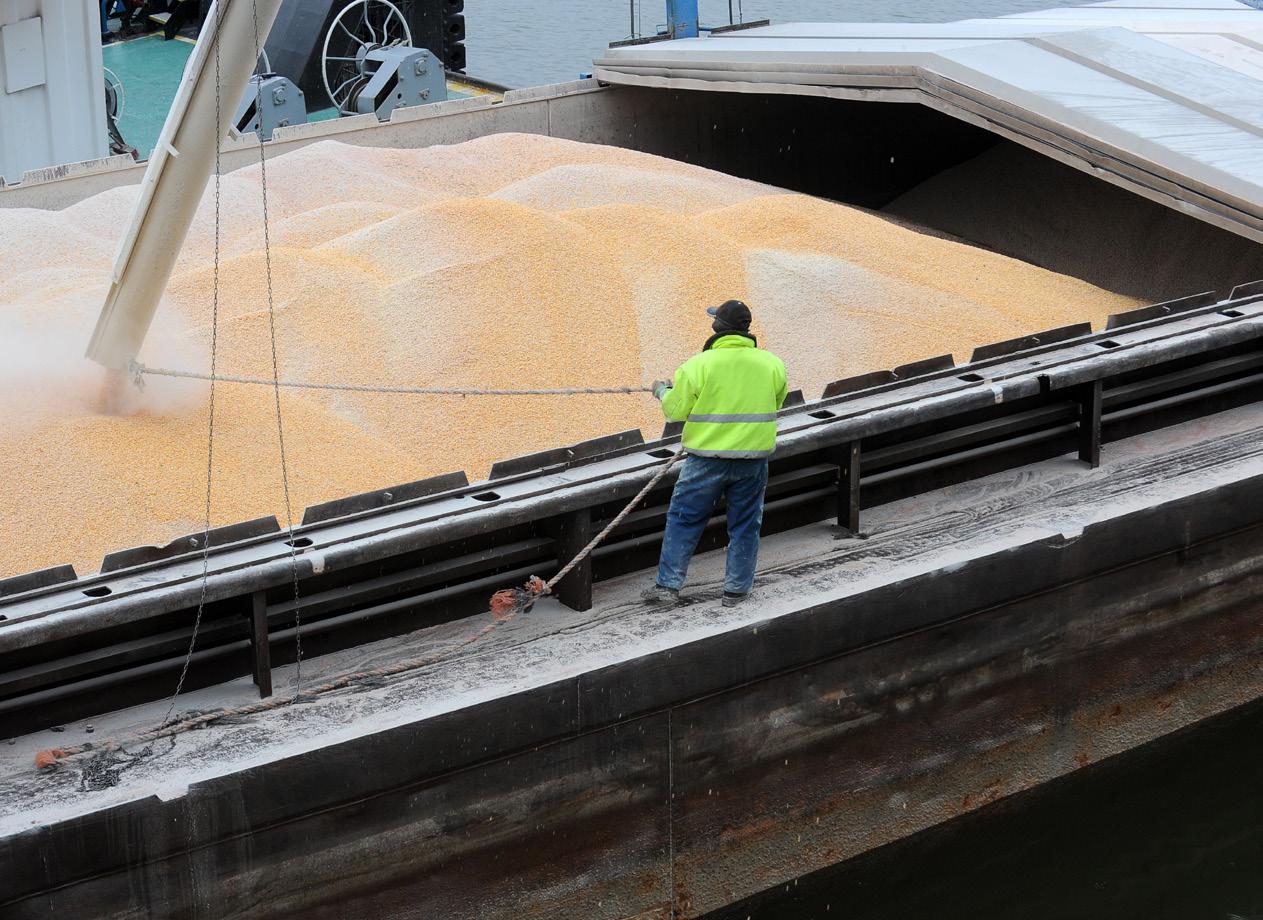
4 minute read
Continuous, Adequate Investments in Infrastructure

There are few more important things to our national security and our domestic supply chain than continuous and adequate investment in infrastructure. About 50 percent of Illinois soybeans are exported by way of the Gulf of Mexico, utilizing our rich natural resource of the Illinois and Mississippi rivers. Barges have the ability to hold 52,000 bushels of agricultural products, or 600,000 bushels in a 12-barge tow, allowing sellers to move beans in greater quantities and producing less greenhouse gas emissions than if they were moved by a fleet or large truck. And yet, the media doesn’t seem to report on the major barriers that stand in the way of the maintenance and repair of locks and dams. Here at ISA, we don’t let news cycles dictate what work we put in, we go after the issues that affect farmers the most, like investment in our infrastructure.
You might have seen headlines about substantial ongoing investment in infrastructure. These include the Bipartisan Infrastructure Law of 2021, the Navigation and Ecosystem Sustainability Program (NESP), and the work of the Army Corps of Engineers. Millions, if not billions, of dollars have been earmarked in the legislative process to fund repairing, building, and maintaining of our locks and dams. For those unfamiliar with NESP, it is an investment program in small-scale navigation efficiency projects, new locks and ecosystem restoration projects on the Mississippi and Illinois rivers.
Funding of programs such as NESP and support of the Army Corps of Engineers is critical, as these projects aren’t cheap. For example, you might have seen that $732 million was set aside for the Lock and Dam 25 expansion. Yet anyone who has funded a project knows that the initial price tag rarely covers the full cost of the undertaking.
What the media won’t tell you is that these projects need consistent help and attention, including regular allocations of funds beyond the initial price tag of a project. We like to think handing out money will solve a problem, but if the current allocation doesn’t come close to the scale and scope of the issue at hand, the project will not get done. A major structural barrier to accomplishing these critical lock-and-dam projects is ensuring the funds actually make a dent in the full scope of a project. Earmarks made in Congress, for better or for worse, are absolutely necessary to the completion of these vital infrastructure problems. Congressman Eric Sorensen, along with Congresswoman Nikki Budzinski, and Congressman Darin LaHood have worked to ensure projects such as NESP get funded.
The next story you won’t read in your newspaper is the actual cost of delays in building these waterways. According to the Waterways Council, the percentage of vessels delayed traveling down the river increased from 35 percent in 2010 to 49 percent in 2017. Delays can cost up to $739 per hour for an average tow, amounting to more than $44 million in additional costs per year. This burden doesn’t just affect the Army Corps or groups contracted out to complete these projects, but also the American farmer who shoulders the brunt of these delays. Currently, the majority of these projects are still in the pre-construction phase, despite the billions of dollars invested in projects such as NESP and others. Whether the delay is caused by a lack of consistent, adequate funding, labor shortages, climate factors or tools the Army Corps needs to get the job done, the delay of such projects is unacceptable.
So what is ISA doing to address this problem? We’re here working with legislators, collaborating organizations, and Illinois farmers to pressure Congress to continue funding these projects, based on feedback from the Army Corps. We’re investigating solutions to the problems standing in the way of projects such as NESP being completed by asking the question, “What does the Army Corps need in its toolbox to actually get the job done?” We’re working to educate the public about the importance of these infrastructure projects, so the public can stand with farmers in our call to finish the job.
Thank you for standing with us. As we move into the New Year, please continue to join your voice with ours as we call for these critical infrastructure jobs to reach completion.







